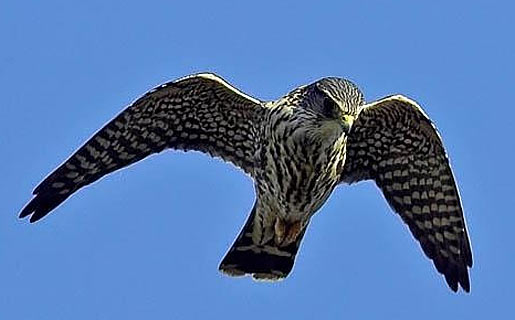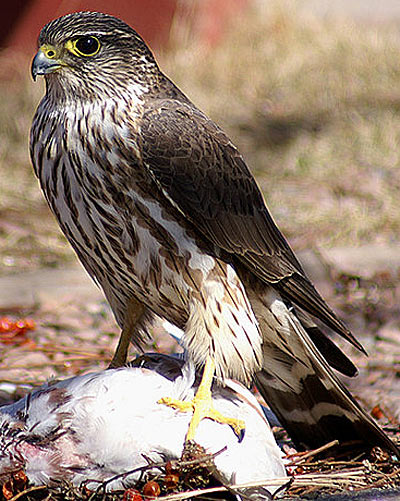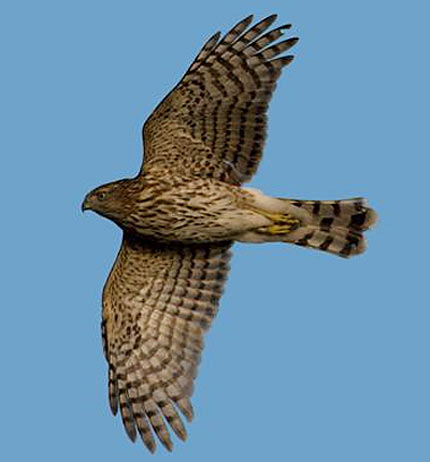Merlin – Small, Fast, Agile, Bird-Eating Falcon

The merlin (falco columbariius) is a smallish, slender falcon that can sometimes be mistaken for a pigeon in flight because of its size, shape and gray and white coloring. They have even been called the pigeon hawk. A better look at the falcon’s strong raptor head will straighten out that mistake. The merlin may even eat a pigeon that is almost as big as itself. Juveniles and females can have shades of brown coloration while the males have a touch of blue. There are three subspecies in North America. They are also present across Eurasia, in northern Africa and southern Asia. They are about 9.4–13 inches (24–33 cm) tall and have a 20–26 inch (50–67 cm) wingspan.

Their diet consists mainly of small grassland birds. They sneak up on birds, darting around banks, and over hills, flushing the smaller birds out of trees and shrubs and out-flying them to catch their prey. The are fast and agile and often catch birds in mid-air. They can also eat insects but prefer larger ones like dragonflies. If the mood strikes them, they may eat a bat, vole or reptile.

In the 60s and 70s there was a decline in their numbers and it was realized that the birds were very susceptible to pesticides like DDT. Once these chemicals were banned their numbers again increased.

Regarding the above photo. I received a message from Andrew Francis:
The above picture is not a Merlin. I’ve asked 3 other UK-based professional ornithologists (who like me do wind farm environmental impact assessment) and they agree with me!
Our reasons:
1) Rounded wing tips (an accipiter characteristic)
2) Wide hips, bulky chest (which also eliminates sparrowhawk)
3) Tail to wing width looks right (tail too short for sparrowhawk)
4) Lack of moustachial stripe (visible on most falcons)
We think the bird is a juvenile because the streaks are longitudinal on the chest (rather than lateral bars) which is a juvenile characteristic in Goshawks. The picture turned up in a picture quiz (non-commercial, actually an aptitude test!) and I argued about it!
Instead of removing the image, because I am sure he is correct, I thought I would just post the information here so visitors that may be unfamiliar with the details of bird and animals identification can see what level of inspection it takes and how much fun birding and wildlife identification in general can be.
